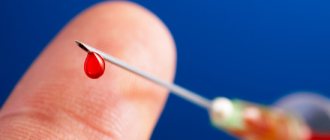1.General information
The apt, albeit somewhat frivolous name “geographic tongue” refers to the inflammatory-dystrophic process in the mucous membrane of the tongue, also known as “wandering glossitis”, “migratory oral erythema”, “exfoliative glossitis” (formulation in ICD-10), “desquamative glossitis”, etc. Exfoliative in translation means “flaky”, desquamative means “deprived of scales”, glossitis is inflammation of the tongue. Peeling of the epithelium in combination with inflammation and dystrophic changes together form red and white patterns on the tongue, which in many cases really resemble a fragment of a geographical map.
In different historical periods in medicine, there were different views on the essence and pathogenesis of desquamative glossitis (the term and concept were introduced into the medical paradigm in 1831), and the discussion continues to this day. Thus, some authors consider this process to be neurodegenerative, others to be purely inflammatory, and others generally consider it as a non-pathological variant of the norm.
The prevalence of “geographic language” varies significantly depending on the age, gender, and clinical composition of the studied samples; in terms of the general population, it is estimated at 2-5% of the population. There is a slight predominance of women, children and adolescents.
A must read! Help with treatment and hospitalization!
Symptoms
Geographical language is manifested by the following features:
- Cloudiness of the mucous membrane - during the initial development, a whitish coating with a gray tint appears. The lesion is small - no more than three millimeters.
- Detachment of the papillae - with further development, the papillae desquamate, and underneath there is an area of bright red color, which stands out strongly against the general background of the tongue. Such an “island” can grow and move, but the boundaries remain clear.
When the focus becomes as large as possible, the boundaries are not so clearly defined and begin to blur. In the center of the lesion, the mucous membrane takes on a normal state, and along the borders keratinization and peeling (desquamation) are observed. Since the affected areas are capable of displacement, desquamation is layered one on one.
That is, new lesions appear on old lesions, the mucous membrane becomes similar to a geographical map. This process is characterized by the fact that all areas of the tongue are affected, excluding the lower part. And this picture can change daily.
Desquamative glossitis manifests itself without pronounced symptoms, so many people learn about the disease only when examined by a doctor. Occasionally, patients complain of itching and burning, discomfort while eating, and impaired sensitivity to the taste of food.
All about the symptoms and treatment of glossitis
The main symptom of the disease is the appearance of the tongue. Some patients, as a result of the disease, develop a pathological fear for their life, a panicky fear of the appearance of a malignant tumor (cancerophobia).
The development of pathology is influenced by severe stress, and it does not matter what emotions a person experiences: positive or negative. In approximately half of the cases, a parallel course with the folded tongue is observed.
Despite the fact that the pathology does not bring much discomfort, the patient is frightened by the very sight of the affected organ, which is stressful and accordingly worsens the course of the disease.
A feature of desquamative glossitis is its complete disappearance, more often for a long time, but then the symptoms reappear.
2. Reasons
There is no single point of view regarding the etiopathogenesis of inflammatory desquamation of the tongue; the issue continues to be studied and discussed. According to the most reasoned hypotheses, the cause may be infections (both bacterial and viral), hereditary predisposition, diseases of the liver, pancreas, gastrointestinal tract (primarily gastritis, gastroduodenitis, peptic ulcer and intestinal malabsorption syndrome), endocrine and metabolic disorders, exudative diathesis in children, autoimmune diseases, helminthiasis.
Visit our Gastroenterology page
Causes of desquamative glossitis
In medicine, there is no clear list of reasons why desquamative glossitis occurs. This disease can be diagnosed separately, or can be caused by certain systemic disorders.
The causes of primary desquamative glossitis include mechanical damage - injury from sharp edges of teeth or poorly fitted orthopedic structures, burns from hot food and chemicals. It is also common in young children as a reaction to the appearance of their first teeth.
3. Symptoms and diagnosis
The first manifestations are usually small, up to several millimeters, light gray lesions. Then such an area from the center turns red and swells somewhat, beginning to protrude above the surface and become covered with red papillary dots. The shape of desquamation foci can be very different, from round to arched. The alternation of inflamed, exfoliated and keratinized areas (usually they are multiple) forms a bizarre picture that can change quite quickly. The process is usually localized on the upper and lateral surfaces of the tongue, sometimes spreading to the lower areas.
In rare cases, desquamative glossitis causes subjective discomfort at the level of sensations - usually a burning or tingling sensation, less often pain when eating. In most cases, the disease is asymptomatic, for years or even decades; A recurrent (recurrent) type of course with long-term remissions is often noted.
To establish a diagnosis, an examination, collection of complaints (if any) and anamnesis are usually sufficient. However, given the importance of desquamative glossitis as a possible indicator of serious diseases, a multifaceted laboratory study is indicated (they begin with the appointment of general clinical and biochemical tests).
About our clinic Chistye Prudy metro station Medintercom page!
Diagnostics
Making a correct diagnosis is not particularly difficult, so any doctor can recognize the geographic language based on the following studies:
- Collection of anamnesis, which is based on the patient’s complaints and examination data.
- General analysis .
- Bacteriological culture to detect pathogenic microorganisms and determine the causative agent of the disease.
- Polymerase chain reaction (determination of the pathogen by DNA).
- Enzyme immunoassay (presence of non-standard antibodies).
- Scraping the mucous membrane of the tongue to identify treponema pallidum (if syphilis is suspected).
- analysis to detect worms.
To differentiate from other diseases, the doctor focuses more on the movement of lesions.
4.Treatment
In cases of asymptomatic disease, if there are no signs of underlying somatic diseases, therapy is not required and is not prescribed. The exception is the mandatory sanitation of problematic teeth and oral cavity, as well as normalization of the diet - which, however, is indicated for absolutely all people.
If there are symptoms of a particular disease that may be the cause or basis for the development of desquamative glossitis, the patient is referred to a specialist of the appropriate profile, where he receives etiopathogenetic treatment.
Treatment
Treatment is primarily aimed at eliminating the cause (problems with the gastrointestinal tract, bad habits, endocrine disorders in the body).
- Sanitation of the oral cavity – treatment of carious teeth, maintenance of oral hygiene.
- Diet – the patient is prescribed a special diet that does not contain foods and drinks that irritate the oral mucosa. For example, hot, spicy and smoked dishes, carbonated and alcoholic drinks and others.
- Quitting tobacco products.
- Local treatment involves the use of antiseptic rinsing solutions. The most commonly prescribed drugs are Chlorhexidine, Miramistin, Furacilin, and potassium permanganate.
- Novocaine blockades - injections into the area of the lingual nerve (10 injections per course).
- Solutions with an analgesic effect - in the presence of ulcers and erosions. Treated with an antiseptic solution using a tampon.
- Preparations to boost immunity: vitamin complexes, immunostimulants, antihistamines.
- Ointments – have a healing and analgesic effect, applied in the form of applications. The specialist often prescribes Actovegin, Kamistad, Lidocaine.
- Antibiotics - when purulent processes are detected in the oral cavity, regional lymph nodes and tissues: Tetracycline, Doxycycline, Rocephin, Suprax and others. In the most advanced situations, surgical intervention is prescribed.
- Mycotic drugs when fungal microorganisms are detected: Lamisil, Nystatin, Exifin.
Some patients with cancerophobia need psychological help; this requires consultation with a psychologist or psychotherapist.
Oral diseases (glossitis)
Glossitis is an inflammatory disease of the oral cavity that causes changes in the surface of the tongue. The tongue turns red and swells; A white coating, a burning sensation, and growths appear. There are more than 10 types of glossitis and only three of them are characterized by the appearance of cracks on the surface of the tongue.
Folded glossitis.
A congenital anomaly that is determined immediately after birth. Characterized by the presence of cracks of varying depths. Normally, they do not cause discomfort.
Diamond-shaped glossitis.
The affected area is diamond-shaped and has cracks in the middle of the tongue. Most often appears with gastritis with low acidity.
Desquamative glossitis.
It is sometimes called “geographical” because the lesions resemble the outlines of continents. Damaged areas can “move” on the surface of the tongue, almost always causing pain, burning, and shallow cracks. The reason for the appearance of such glossitis is still not clear. Some argue that this is an allergic reaction, others that it is a hormonal imbalance and gastrointestinal diseases.
How and with what to treat glossitis of the tongue in adults and children
Treatment of tongue glossitis requires elimination of the diseases that led to its appearance. This refers to anemia, gastrointestinal diseases, syphilis, etc. To minimize pain, you need to rinse your mouth with Furacilin, a solution of Chlorhexidine (0.05%) or potassium permanganate, and avoid eating rough food. In case of severe pain, local applications with anesthetics can be made:
- Trimecaine solution (2%);
- Lidocaine solution;
- Pyromecaine solution.
If the tongue is dry, it should be lubricated with a mixture of glycerin and Anestezin.
For a speedy recovery, the skin of the tongue must be cleaned of plaque using a cotton swab soaked in proteolytic enzymes (Chymotrypsin, Trypsin). If there are painful ulcers, these drugs for the treatment of tongue glossitis can be replaced with applications with Iruksol. After the hygiene procedure, it is important to treat the cleaned lesions with antiseptics. This helps prevent secondary infection and also prevents the development of serious complications.
To speed up regeneration processes, gel and jelly-like medicines with solcoseryl, as well as preparations containing vitamin A, can be used. The mixture formed by rosehip oil and vitamin A heals the affected skin well and relieves pain.
If excessive thickening of the stratum corneum of the epidermis (hyperkeratosis) is observed, surgical intervention is ordered. Antifungal, antibacterial and anti-inflammatory drugs are selected taking into account the severity of the disease and the dominant symptoms.
All patients with glossitis can take immunomodulators. Hormones are used extremely rarely - only for difficulty breathing. To avoid atrophy of taste organ cells, Hydrocortisone and Prednisolone ointments are prescribed in short courses.
How to treat tongue glossitis at home
Treatment of tongue glossitis at home can be carried out using traditional medicine recipes:
- decoction of chamomile flowers. 1 tbsp. pour a glass of boiling water over the flowers. Infuse, strain. Rinse your mouth after every meal;
- bedstraw decoction. 1 tbsp. pour a glass of boiling water. Leave for 30 minutes. Take 50 ml orally after meals and rinse the mouth 3-4 times a day. Similarly, you can use decoctions of sage and basil;
- soda solution. Add 2-3 drops of iodine and a teaspoon of baking soda to a glass of warm water. Rinse your mouth 3 times a day;
- natural honey Slowly dissolve a spoonful of honey;
- propolis. Lubricate the areas of inflammation 5 times a day. Instead of propolis, you can use raw carrot/potato juice or rosehip oil;
- tea tree oil. Dilute in equal proportions with olive, sunflower or sea buckthorn oil. Treat glossitis lesions 5 times a day or keep it in your mouth for several minutes.
Diagnosis and treatment
To diagnose glossitis in adults, the following basic methods are successfully used today.
- Examination
An experienced dentist in 95% of cases is able to diagnose glossitis based only on visual data. - RPR test
A special test that detects antibodies to the cardiolipin antigen. - Scraping
It is taken from the surface of the tongue to exclude syphilis, whose symptoms are similar to glossitis. - PCR
The most modern and accurate diagnostic method for identifying a wide range of infectious pathogens.
Treatment of glossitis depends on the form of the disease and analysis of concomitant diseases, but in any case it should be comprehensive:
- enhanced oral hygiene;
- general strengthening therapy aimed at increasing immunity;
- local treatment with antiseptics;
- strict diet;
- targeted medications (for example, for candidal glossitis - antifungal agents).
You can find out more about how to treat glossitis of the tongue in the article.
Treatment of desquamative glossitis
To understand how to treat desquamative glossitis, it is necessary to determine its cause. To do this, a diagnosis is carried out: first by a dentist, and then by a therapist and, if necessary, specialized specialists. Patients take a swab from the oral cavity for microflora, which can be used to determine the nature of the lesion (viral, fungal, bacterial). You may also need ultrasound diagnostics, a general or detailed blood test.
As a rule, desquamative glossitis goes away after the disease that caused it is eliminated. At the same time, local therapy is prescribed: antiseptic rinses and ointments, pain relief. The doctor may prescribe antibacterial or antifungal drugs, and if there is noticeable discomfort, give an injection of novocaine.
Sanitation of the oral cavity, including professional hygiene, is mandatory during therapy.
Desquamative glossitis does not always require special treatment, since it does not pose a serious threat to health, and its symptoms go away on their own over time (this is especially typical for children). But the problem cannot be left to chance, because there is a risk of developing chronic desquamative glossitis.
Main symptoms of glossitis
Glossitis, the symptoms of which are very diverse and largely depend on the cause of the disease and the stage of development of the process, but the following signs are almost always present:
- coating on tongue uneven with spots
- ulcers in the oral cavity of varying depth and extent
- color changes (general or in the form of local spots)
- swelling of the tongue, the presence of “imprints” of teeth on its lateral surfaces and other sores
- limited tongue mobility
- bad breath problem
- salivation disorder
Often these changes are accompanied by a decrease in taste sensitivity, a burning sensation and pain at the slightest movements of the tongue while eating and when talking. Sometimes, as the inflammatory process progresses, there is a deterioration in general health: an increase in temperature, enlargement of the submandibular and cervical lymph nodes.








